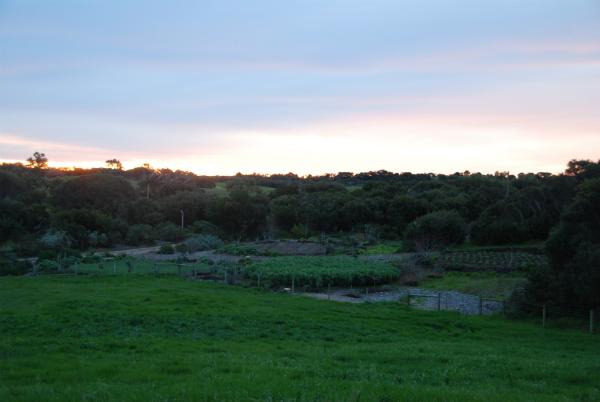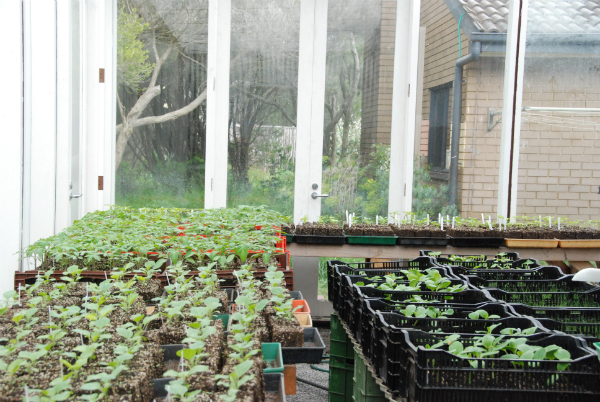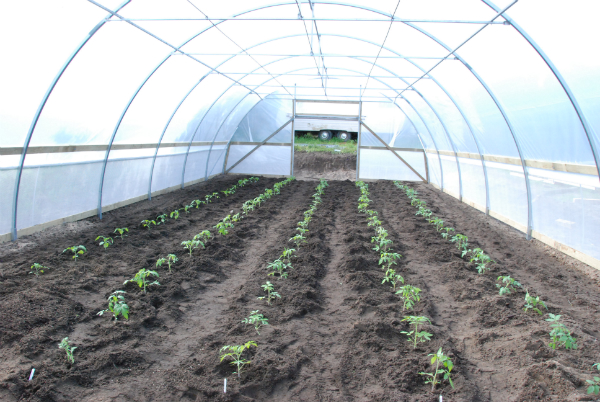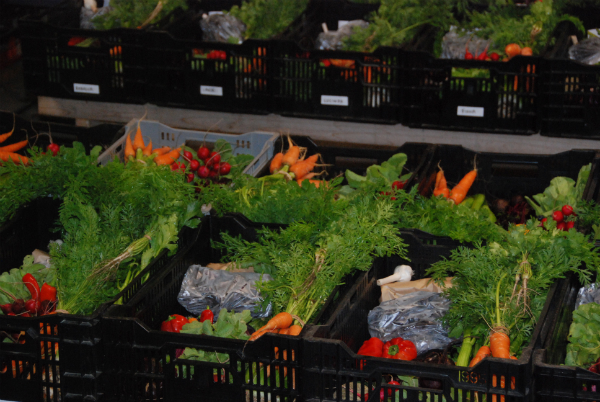Reflections on our CSA
/It has been quite awhile since we sent out a newsletter. I had all the best intentions with many photos sitting on the desktop of my computer. But the time would slip past and the photos would seem out of date.
We are nearing the end of our third season as CSA farmers. And with two weeks of harvesting for CSA boxes to go, and Winter setting in, Peter and I are reflecting on how we started, where we are now and the path that lies ahead.
We started our CSA with a trial run, a seven week season in 2012. 
 That trial not only showed us that we could grow food on a larger scale (we really weren’t sure about this), but the feedback we received was that people liked the CSA model and wanted more.
So we set about preparing more land, cover cropping, building a packing shed, planning, seeding, weeding, irrigating, and harvesting for a 26 week CSA season in 2012-2013. We increased from 17 families to 55.
That trial not only showed us that we could grow food on a larger scale (we really weren’t sure about this), but the feedback we received was that people liked the CSA model and wanted more.
So we set about preparing more land, cover cropping, building a packing shed, planning, seeding, weeding, irrigating, and harvesting for a 26 week CSA season in 2012-2013. We increased from 17 families to 55.
And this season we added Oct, Nov and June and another 30 shares. At the end of June we will have provided boxes for 39 weeks to 85 families. This year we also built a bigger glasshouse for propagation (from recycled windows), built a polytunnel in hopes that we could offer early season tomatoes, added a walk-in cooler and store room to our packing shed to preserve the harvest.

 Our main priorities have remained - Building soil life, in order to ensure that the food we are growing is nutrient dense and that the soil is left better than what we found. And providing a diverse box of vegetables that best suits the desires of the families in our CSA.
Our main priorities have remained - Building soil life, in order to ensure that the food we are growing is nutrient dense and that the soil is left better than what we found. And providing a diverse box of vegetables that best suits the desires of the families in our CSA.

 We have continued our biodynamic practices which not only boost soil life and help plants with the uptake of nutrients but also support the plants so that they are more pest and disease resistant. We have continued to grow heirloom crops that are not always available through commercial retailers as well as offer specialty crops not often found on small farms.
We have continued our biodynamic practices which not only boost soil life and help plants with the uptake of nutrients but also support the plants so that they are more pest and disease resistant. We have continued to grow heirloom crops that are not always available through commercial retailers as well as offer specialty crops not often found on small farms.  We are pursuing our desires to be a sustainable farm - using soil blocks for propagation, which has eliminated plastic growing cells from our glasshouse - sourcing local materials to make our own compost - growing green manure crops to renew our soil - Building infrastructure with recycled materials - Limiting tractor use.
We are pursuing our desires to be a sustainable farm - using soil blocks for propagation, which has eliminated plastic growing cells from our glasshouse - sourcing local materials to make our own compost - growing green manure crops to renew our soil - Building infrastructure with recycled materials - Limiting tractor use.
 We have also furthered our goal to be share what we have learned with aspiring farmers. We have worked with 10 interns and five work share volunteers all of whom have a desire to understand how to grow vegetables sustainably. We have written an extensive internship which shares our farming from building soil, biodynamic practices, seeding with the moon, pest and disease management, market garden tools and tricks, irrigation, harvest and storing crops, crop rotation and more. It is wonderful to see the growing desire of people to be farmers and also wonderful to see the support of the community for locally produced food.
We have also furthered our goal to be share what we have learned with aspiring farmers. We have worked with 10 interns and five work share volunteers all of whom have a desire to understand how to grow vegetables sustainably. We have written an extensive internship which shares our farming from building soil, biodynamic practices, seeding with the moon, pest and disease management, market garden tools and tricks, irrigation, harvest and storing crops, crop rotation and more. It is wonderful to see the growing desire of people to be farmers and also wonderful to see the support of the community for locally produced food.
As the final leaves fall to the ground and we move towards the shortest day of the year, we are reflecting on how far we have come and where we will go from here. The CSA model we have established for our farm, has made us think of so many benefits for farmers and the community. 
Currently all that we grow is for our CSA members. The buy a share in the farm upfront in exchange for a weekly box of seasonal vegetables and occasionally fruit. This year I really felt how this model has removed the food we grow from market value prices. Our motivation in having early tomatoes, for example, is not to be the first on the block with heirloom tomatoes with a hefty price tag . It is to offer our members a present - vine-ripened, glorious tasting tomatoes for Christmas. The cost of the box does not increase. This is the same in late Autumn when potato prices are so low. We are still putting potatoes into the boxes and the box value has not decreased. And when we do have excess, we put it into the boxes without increasing the box price. When there is so much excess that even our members can not use any more, we are able to pass the surplus on to people in need, via "Second Bite" and "Connections", without wondering if we could have sold it somewhere. We have already received the income we budget for.
We have also felt very appreciative that when we have had crop failures, our income has not been impacted. We feel blessed that so far we have been able to manage the twists and turns of weather and pests. Although there have been some weeks where the boxes have been missing items that we had expected, the diversity of the crops we grow has meant that the boxes have rarely fallen below the number of items we estimate they should have. The majority of the time, they have had more.
We are continuing to grow as growers, desiring higher quality throughout all of our crops and incorporating new ideas to try and achieve this. In the past week for example, Peter, with the help of our Autumn intern Belinda and our work share volunteer John, has been busy building a moveable chicken house that will keep the chickens safe from foxes and dogs while we rotate them through our growing rows. Hopefully the chickens will scratch away eating weed seeds and pests while enriching the soil with the refuse of plant matter and their manure. We are also trying to refine the crops we grow to best reflect the eating habits of our members, keeping in mind our need to rotate crops and the seasonality of crops.
We are busy planning all of the crops for next years boxes, reflecting on how our CSA may evolve and thinking about capping our CSA membership and allocating a portion of the farm to a farm stand. We see ourselves as the community’s farmers.
 To provide boxes in Oct, we need to begin seeding again in mid July. Stopping the CSA boxes at the end of June, gives us a two-week break from thinking about nurturing food. We are looking forward to those two weeks!
To provide boxes in Oct, we need to begin seeding again in mid July. Stopping the CSA boxes at the end of June, gives us a two-week break from thinking about nurturing food. We are looking forward to those two weeks!
To see a gallery of this seasons What's in the Box photos, please go here.
To learn more about our CSA program and/or express your interest in joining our 20124-2015 season, go to our website.
An article about CSA’s featuring Transition Farm was written by Milkwood, a family-based social enterprise that thrives on sharing practical skills and knowledge that can help individuals and communities move towards a mode of living that’s ethical, abundant, and deeply hands-on. Have a read, Community Supported Agriculture at Transition Farm.
We have found farming to be all consuming this year. With the scales between family time and farming often being tipped towards farming, we have prioritized family...hence the lack of newsletters. We do post frequent farm photos on instagram and facebook.
















